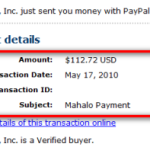All website owners want a site that consistently produces leads. After all, if you want to make money online, you need a website that’s designed specifically to help you attract and land clients. The good news is, it isn’t extremely difficult to create and launch a website that continually generates leads for you. Just follow these tips when you’re ready to get started.
Create Each Page with a Goal in Mind
In order to produce the maximum amount of leads, you need to optimize your website properly. This means each page you publish should serve a purpose. Of course, for most website pages, the goal will be to sell your company’s products or services. However, your site’s main pages, blog posts, and other pages that aren’t designed specifically to sell should also serve a purpose and include a call-to-action. For example, your company’s About page might include a call-to-action that entice’s people to sign up for your company’s email list. Then, you can send their information from your website to your customer relationship management – or CRM – to make it easy to follow up with the person later. Simply put, one of the most important exact considerations you need to make when buying a CRM includes finding an option which integrates with your website and your email automation software.
Then, consider these things when determining the goal of each webpage:
- How does the webpage benefit your customer? By understanding how the information on the webpage benefits your customers it’s easier to decide what type of call-to-action is best for the page. For example, if you have an informational blog post, you should consider directing people to other posts for more information on the same topic to keep them browsing your site or you might consider directing them to specific products you discuss in the post.
- Do you want to direct potential clients to other places on your website, sell them a product, or gather information so that you can continually market your products to them?
- Where do you need to direct your customers to reach your goal — what link do you want to include in your call-to-action?
Use Primary and Secondary Calls to Action on Each Page
Sites that generate a lot of leads have more than one call-to-action on a webpage. This is because people don’t always click on the first call to action they see on a site, and one type of call to action may appeal to some visitors and not others. For example, if you’re creating a sales page for a service your company offers, you might have a call to action at the top of the page for people who are ready to buy, a call to action further down the page for people who need a little bit of convincing, and a call to action that lets people sign up for your email list instead of making a purchase so you don’t lose lead information for people who aren’t quite ready to finalize their purchase. See, a page set up like this lets you gather information from people in different stages of the buying cycle instead of solely targeting those who are ready to buy right away.
Necessary Tools for Lead Gen Sites
It’s impossible to create a lead generating site without the use of some online tools. The good news is, cloud-hosted software and apps are typically a cost-effective way to gather lead information so you don’t need to spend a small fortune on the tools you need. Some cloud-hosted tools you should consider using include:
- Lead page software. Cloud-hosted lead page software makes it easy for you to create high-converting lead pages quickly. They offer a simple drag-and-drop tool that completely streamlines the process, and most integrate with popular email automation software.
- Email automation software. Your email automation software lets you communicate with your audience without manually contacting each and every lead. You simply create a workflow that tells the software what to do in specific situations and which emails to send. For example, people who sign up for your email list from the homepage of your website might go directly into your Welcome workflow so they can receive your series of welcome emails before they get added to your regular email list.
- Form generators. Most email automation software has some sort of form generation tool, but software designed specifically for creating website forms lets you create forms that look like they were designed by a pro in a matter of minutes.
- CRM software. Use your CRM software to manage your leads. It keeps them organized depending on where they are in the buying cycle, and tells you when you need to follow up with each lead.
Ultimately, creating a lead generating website is all about selecting the right tools and setting your site up so that everything the needs to happen once a lead enters their info is automated. Other than that, all you need to do is create the right calls to action for each webpage and promote your website content to direct traffic there.








